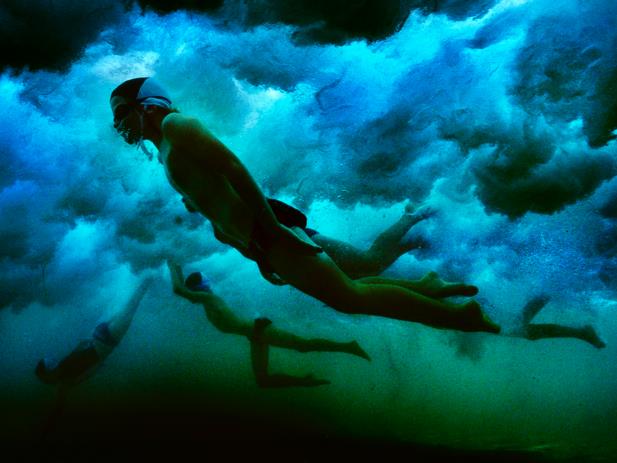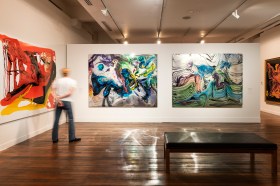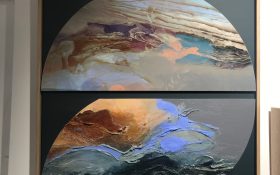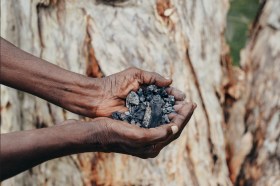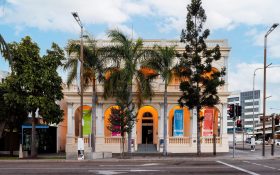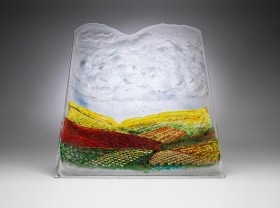Sixteen finalists have been selected for the 2014 Basil Sellers Art Prize, including Narelle Autio, whose work Untitled 2013 (type C photograph, 120 x 80 cm © Courtesy the artist and Stills Gallery, Sydney) is pictured above.
It’s easy to be sceptical about art prizes in Australia. There’s so many of them, for starters. More than 100 on my last count. Many artists don’t like them. They’re uncomfortable with situations that divide the field into winners and losers, or reduce everything to a beauty contest.
So what sets the Sellers apart from the 101 other art prizes in Australia?
Building a better art prize
Early in 2006, businessman and art collector Basil Sellers approached me with a simple proposition. He wanted to encourage Australian artists to engage with an ignored topic, sport. His plan was just as simple; he would offer a substantial cash prize as an incentive.
‘Let’s make it the richest prize in the country,’ said Basil. It might seem strange, but my immediate response was, ‘Not so fast’.
Prizes aren’t always as beneficial to artists as you’d think. An artist must make a new work (there’s a cost, in time, money and opportunity), possibly on a narrow theme that would make the work hard to sell. They have to deliver and retrieve the art work (another cost) and often pay their own way to events.

Artists who make the final cut may find their work displayed unsystematically, without the supporting elements – catalogue, interpretative labels, education programs, floor talks — associated with a major exhibition.
The prize money itself is not always large, and many artists would see applying for a grant as a better use of their time. (Surprisingly, the odds of securing a grant are better than winning an art prize: 1 in 800 for the Archibald Prize, closer to 1 in 30 for a grant.)
Art prize exhibitions can have a ‘flash in the pan’ character. The media focus is on the announcement of the winner. And it can feel as if the art has been brought together somewhat arbitrarily. As artist-musician Brian Eno wrote in his A Year With Swollen Appendices (1996), you might just as well award art prizes for ‘Best painting of a whale’ or ‘Best picture done in the dark’.
Planning the Sellers

That’s why I approached the idea of a substantial new art prize with caution, even though art and sport were topics dear to me. The risk was that Basil Seller’s vision and generosity could look like an eccentric whim tempting artists to leave their own goals behind in pursuit of the winner’s cheque.
Long-term philanthropic impact is achieved by balancing the donor’s goals with the complex needs of the field they wish to support. What we had to do was improve the way art prizes were run, so that entrants would see it as a serious professional opportunity rather than another lottery.
And we had to build Basil’s personal interests into a game-changing art prize, demonstrating that sport was generating cutting-edge art.
Ideally, we might even change the story of Australian art, encouraging audiences to recognise a tradition of artists using sport to explore Australian identity.
So I drew up a business plan – yes, that’s what art museum directors do these days – focussing on the challenges facing a ‘start up’ art prize in a crowded field. The theme of sport wasn’t a problem. Numerous contemporary artists were fascinated by the global, televisual economy of modern sport. And plenty of them simply loved, and played, sports.

We began by opening up the parameters of the prize. Where most are restricted by medium (say, photography) or genre (say, portraiture); we threw it open to any art form. Most allow only a single entry; we encouraged artists to show multiple works, so that visitors could connect with their art in depth.
Many prizes are a ‘pay to play’ affair; we offered every finalist a A$3000 fee, freight, airfare, accommodation and an exhibition with all the trimmings. In fact, more than two-thirds of the project budget is spent directly on supporting and promoting the artists.
The A$100,000 first prize is a nice round number but was actually set against the median artists’ income (A$36,000 in 2007/08). The winner’s cheque was designed to set an artist up for two-years’ focus on their art, with a subsequent boost to their professional success.
Or, as we used to say behind the scenes, ‘quit your day job’. In addition, one of the finalists is also selected for a one-year A$50,000 creative fellowship at Melbourne’s National Sports Museum.
These days, there’s more to supporting an artist than money alone; doors can be opened, connections made and the artist’s interests fertilised.
Our focus was on making the prize exhibition a serious platform for discovering, engaging with and promoting contemporary art. The profile and reputation of every finalist should be enhanced, not just the winner.

So, has it worked?
A crucial decision was to make the prize bi-annual; giving the finalists almost a year to prepare their entries. The Potter’s curators work closely with the artists, rather than simply taking delivery of their work. The result is that finalists have repeatedly told me that the Basil Sellers prize is among their best museum experiences. And with each exhibition, they demonstrate that sport is genuinely the territory of cutting edge art.
Since the first award in 2008, we’ve seen signs of the impact of our decisions. Most of the finalists’ art works are sold, many of them to major public galleries. There has been an increasing number of exhibitions across the country on the theme of sport. And other art prizes have improved the support they offer artists and their investment in art prize exhibitions.
The downside? There are still winners and losers. No matter how much support we give finalists, we still put them under emotional strain. You wouldn’t be human if you didn’t dream of winning, or were disappointed when you didn’t.
The Basil Sellers Art Prize 4 exhibition runs at the Ian Potter Museum of Art until Sunday October 16.
This article was originally published on The Conversation. Read the original article.